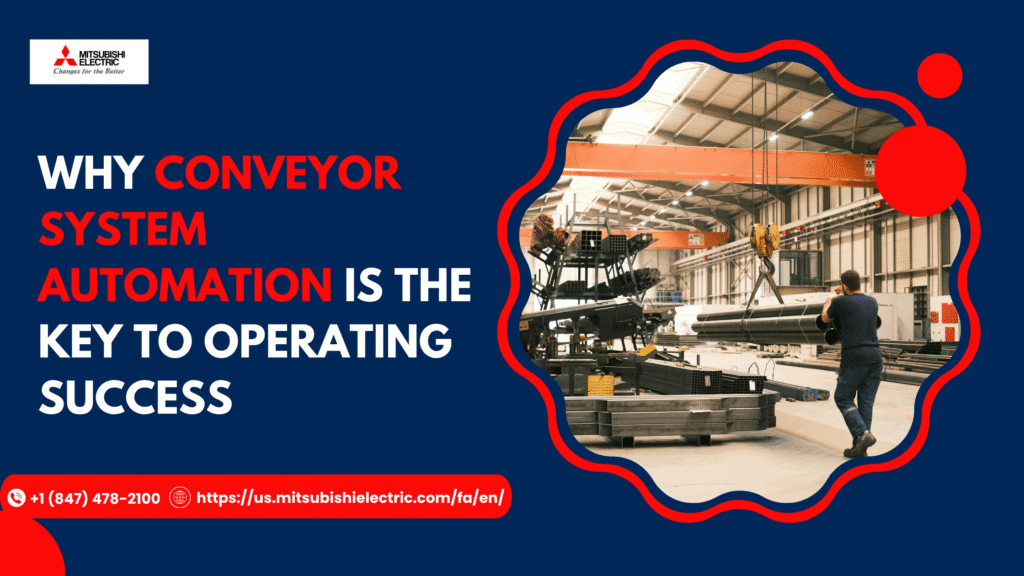
Conveyor System Automation
We all know how quickly customers are demanding from time to time, and therefore, workers are facing safety demands in the factories. There is also a high pressure of increased production all the time to meet the market needs. Conveyor system automation is no longer a luxury investment in this environment. It has now become an important force of productivity, accuracy, and sustainability.
The Way Automation Maximizes Throughput
Operation efficiency is usually pegged on the ease with which materials move between machine tool stations. Handling by hand slows down the process and heightens the possibility of errors made by human factors. Automated conveyors solve both of these issues. They make sure that the materials arrive at the correct station at the correct time, whether to be machined or packaged, or quality checked.
Adaptive speed controls are also provided through automation. Systems automatically slow down or speed up according to the demand and capacity. It helps to use the resources to their best potential without harming the equipment.
The Correlation between Robots and Safety
Safety is not just a regulation issue. It is an ethical duty of any company. Conventional conveyor belts can be prone to continuous attention of operators, which poses the risk of accidents or injuries. These risks are minimised through automation, which minimises human intervention.
Sensors will be able to detect obstacles, automatically discontinue the line in case of the detection of hazards, and keep workers out of risky areas. Automated conveyors are also used in sectors such as food & beverage automation, where contamination risks also have to be kept down to a minimum, and automated conveyors help to ensure that hygiene standards are met by minimizing the handling of raw or packaged products by humans.
Use the Key of Consistency in Food and Beverage Operations
The food and beverage industry is one of the few industries that depend on accuracy. It starts with mixing and then bottling and labeling; each process must be controlled carefully to achieve quality and safety. Conveyor system automation offers the predictable flow required to bring about consistency.
Automated conveyors are used to eliminate defective products during the process. It helps to reduce the wastage and also maintain the brand standards without affecting the quality.
Economicalness by means of intelligent integration
Long-term savings can be used to justify investments in automation. It is also possible to have conveyor systems that are integrated with machine tool stations to streamline the production line, which saves labor expenses and minimizes downtime. The automated systems that are equipped with predictive maintenance technology can anticipate possible problems before they cause a breakdown. This initiative will save money in case of any emergency repair and will also avoid losses caused by delays that cost a lot of revenue.
The perceived barrier of high cost can be an issue for smaller businesses. Nevertheless, modular systems and scalable automation can enable these upgrades to be initiated with specific upgrades instead of completely replacing an entire facility. Small automation programs can even add up to huge financial benefits over time.
Data as the Hidden Advantage
Each cycle on any automated conveyor produces useful data. This data can be analyzed in real-time performance by the use of speed metrics for product counts. The insights can reveal the inefficiencies, monitor the use of energy, and find the opportunities to optimize it further.
In competitive markets, companies that operate using data insights put themselves at the forefront of companies that only use manual monitoring. Conveyors are not physical infrastructure, but data-enabled automation.
Sustainability Benefits of Conveyor Automation
Sustainability has ceased being a trend and has become a requirement. Automation of a conveyor system helps make operations greener by helping cut down on waste, minimizing energy consumption, and saving equipment life. Systems are capable of making automatic adjustments to demand within production and avoiding unnecessary use of energy.
Precision in food & beverage automation will also minimize the bad batches thrown away, and this will lower the waste that would be deposited in landfills. These advantages are not to be ignored with increased regulatory and consumer attention to environmental practices.
The Human Factor Still Matters
Although repetitive, risky, or precision tasks are being automated, individuals continue to be at the center of successful operations. Automation is only to improve human ability; it can never be an alternative to human potential. Employees are able to redirect their efforts towards more valuable tasks like monitoring of systems, solving problems, and ongoing improvement projects.
Not only does this balance enhance the results of operations, but it also enhances job satisfaction by alleviating the strain at the workplace.
Getting Ready for the Future of Operations
The global supply chains keep on changing, and organizations need to keep up. Automation of the conveyor system gives the flexibility to adapt to market changes, scarcity of the labor force, and increasing customer demands. By implementing such technologies, the facilities are in a position to grow and, at the same time, remain competitive in an environment where speed and reliability are required.
The future is with the businesses that will smartly integrate automation in their operations. Conveyors will remain a silent powerhouse to operational success at machine tool stations, as at food and beverage processing.
Final Thoughts
Automation of the conveyor system is not just a luxury. It is a basis of safer, faster, and smarter operations. Intended to be combined with machine tool stations and specific to the food and beverage automation, they introduce uniformity, cost-effectiveness, and sustainability.
Those organizations that operate now will not only reap short-term benefits but also have a long-term advantage as the industries proceed towards higher automation.
